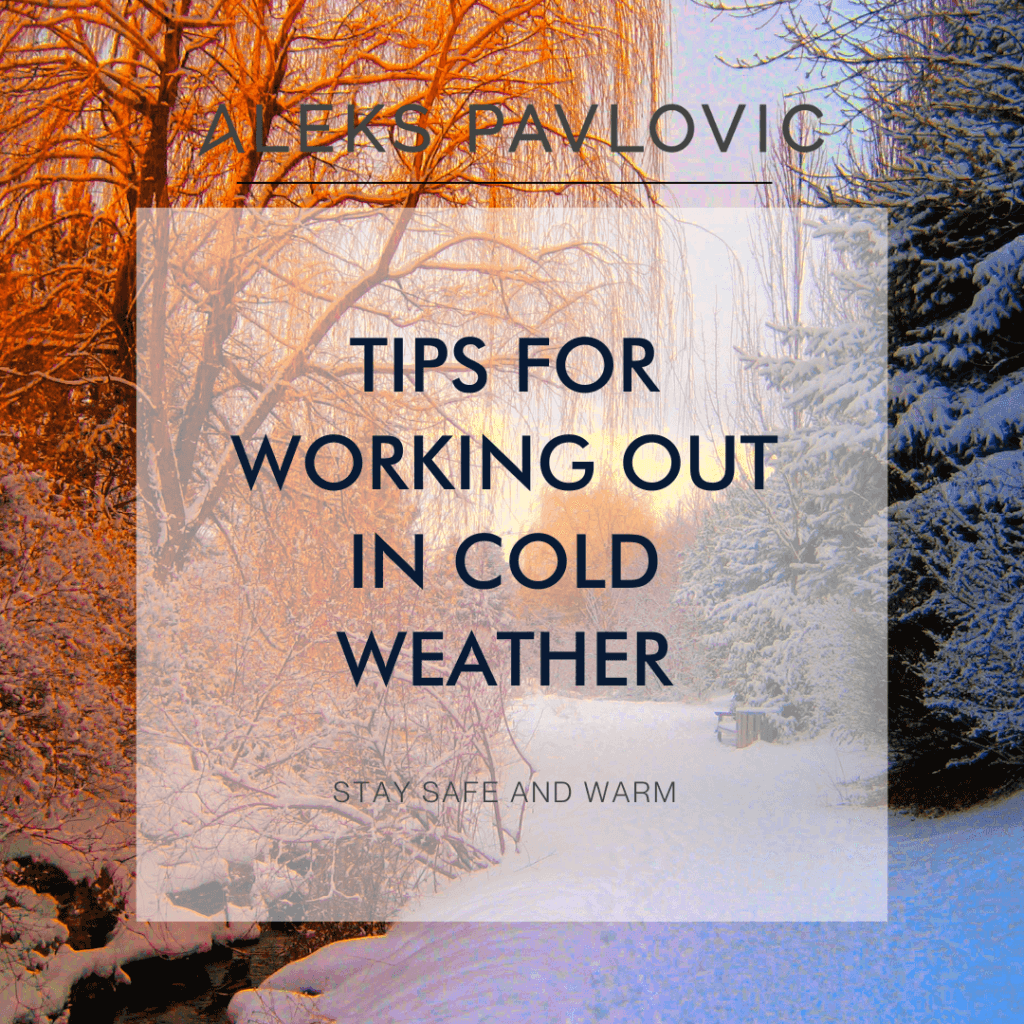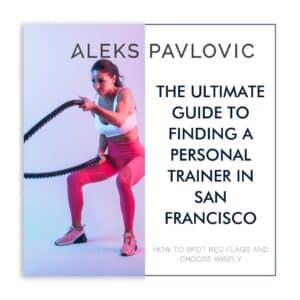Winter can be a tough time for outdoor fitness enthusiasts. With colder temperatures and slick conditions, your normal run or bike ride is suddenly much more hazardous. So what options do you have? Should you just hibernate for the winter or run on a treadmill? While having an indoor alternative for bad weather days is smart, if you follow these tips for working out in cold weather, you can still enjoy the outdoors, even in December.
As a personal trainer in San Francisco, I don’t face the same winter conditions as states further north and east. However, I work with individuals nationwide through online personal training services and want to support your fitness journey year-round. So, let’s talk about the effects of cold on the body and how you can exercise safely.
Why is it Hard to Workout In Winter?

The cold weather brings extra challenges that can make outdoor exercise difficult. While most professional athletes and outdoor enthusiasts have adapted to their environment, the average person may struggle with colder temperatures.
One of the main issues is the risk of slipping on snow and ice. As well as reduced visibility due to fewer hours of daylight in winter, these conditions make it difficult to move safely.
Your body also struggles in cold temperatures, as your muscles may not be able to generate enough energy and heat required to exercise. Trainer for the U.S. speedskating team, Julie Carpenter, explains that the cold slows down all of your body’s chemical processes, including its ability to contract muscles.
So if you feel like your body is working harder than normal during your cold weather run, it is. Make sure to hydrate and eat nutritious food to keep your body going.
Dangers of Cold Weather
When exercising in cold weather, be aware of the increased risk of hypothermia and frostbite. Hypothermia is when your body temperature falls below 35°C (95°F). Though it can happen anywhere, it most often occurs in cold conditions. You’ll experience shivering, confusion, dizziness, loss of coordination, and shallow breathing. If this happens, stop exercising and seek medical help immediately.
Frostbite affects your extremities, like fingers, toes, ears, and nose, as these areas are most susceptible to the cold. Symptoms include aching, redness and numbness in the area and can lead to severe complications.
Cold weather can also increase your risk of soft tissue injuries in your muscles or ligaments, so make sure to warm up properly before your run or bike ride.
Cold Weather Safety Tips for Exercising
Now that we’ve covered some of the dangers, here are my top tips for safe cold-weather exercise:
Wear appropriate layers.
Proper clothing will help trap heat, wick sweat away and protect you from the elements. Wear moisture-wicking layers like nylon and polyester close to your skin and add a waterproof, windproof outer layer. Make sure to wear gloves, a hat, and a neck warmer too.
Stay flexible with your schedule.
If the conditions are icy or visibility is poor, postpone your outdoor exercise session until the temperature rises or the sun comes out.
Hydrate and refuel before and after workouts.
To keep your body warm, you’ll need to stay hydrated and eat balanced meals with plenty of protein. Avoid sugary drinks or snacks; they won’t improve your energy levels in the cold.
Exercise with a friend.
If you plan to exercise outdoors, having an experienced friend join you is always a good idea. They can offer support and act as an extra set of eyes, so you don’t miss any hidden dangers. If you can’t take someone with you, alert someone that you are going out for a run in the cold weather and when you plan to return.
Wear bright or reflective clothing.
Wear bright or reflective clothing to stay visible to drivers, cyclists, and other pedestrians. This will make it easier for people to notice you in the dark—especially if you’re running on a path without streetlights.
Have a backup plan.
If the weather is too cold for outdoor exercise, take your workout indoors to an enclosed space like a gym, studio, or park with heated areas.
Check your traction.
Be mindful of the ground you’re running on. If it’s icy, opt for snowshoes or cleats to keep from slipping and sliding. If conditions are too slick, it may be better to reschedule.
Do a warm-up.
As with any exercise, make sure to warm up before starting your workout. This will help prepare your body for colder temperatures and reduce your risk of injury.
Know the signs of hypothermia and frostbite.
It’s important to be aware of the signs and symptoms of hypothermia and frostbite so that you can take measures to protect yourself. If you’re ever in doubt, seek medical attention or a warm place to rest until you feel better.
Listen to your body.
Finally, paying attention to how your body feels in cold weather is important. If you feel uncomfortably cold, dizzy, or weak, stop your workout and head indoors.
Need a Backup Plan? Get Online Personal Training
Taking proper precautions when exercising in cold weather is key to staying safe. With these tips in mind, you’ll be able to safely enjoy outdoor exercise even in the coldest temperatures. Some days, however, it’s better to stay inside. If you have any questions about exercising in the cold or are looking for an indoor workout alternative, contact AP Wellness Training & Consulting today. I’d love to discuss a custom workout plan to help you meet your winter fitness goals.
And check out my free workout template if you need a last-minute indoor solution.






